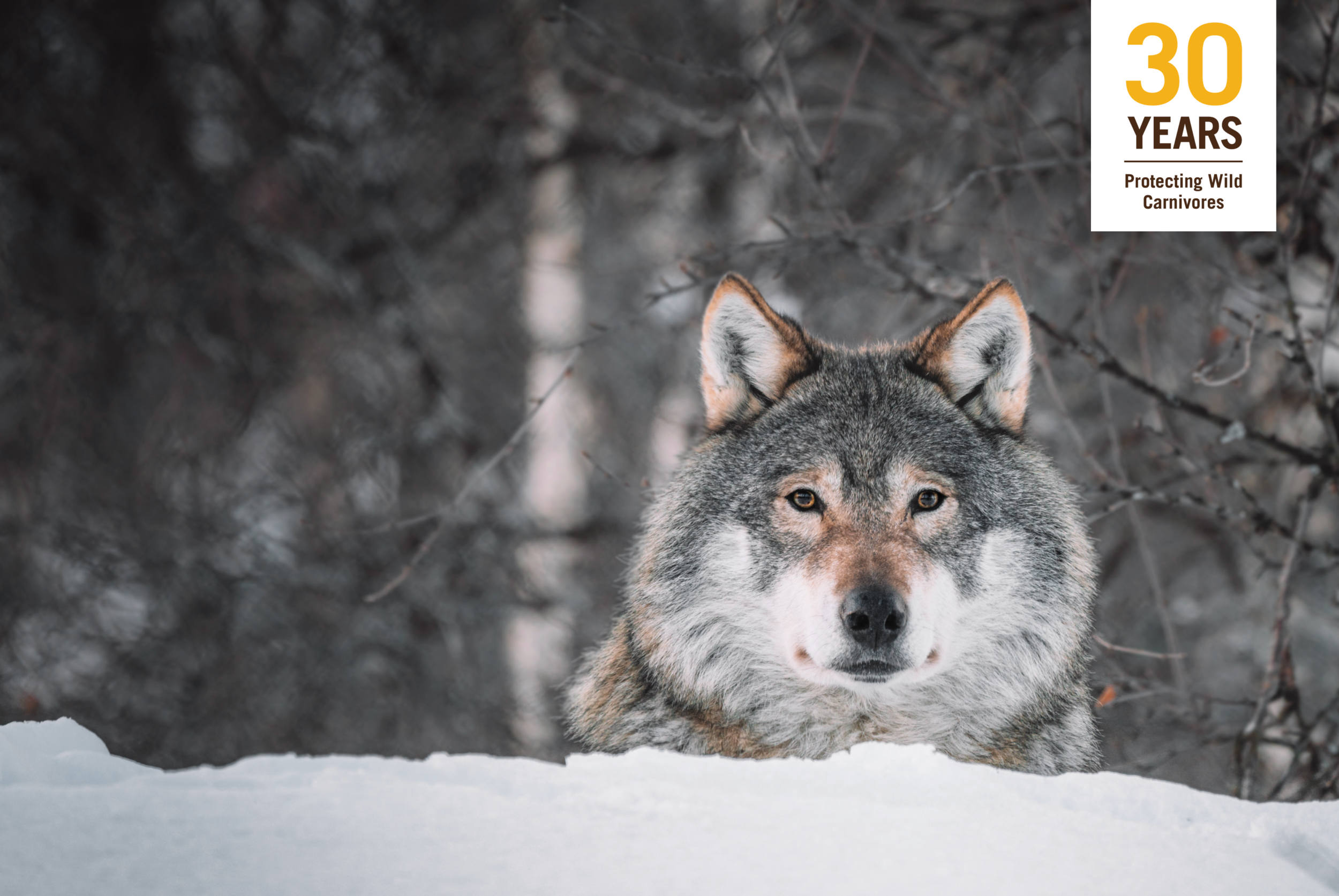
30 years for wild carnivores
Since 1992, People and Carnivores has been working to protect wildlife in the Northern Rockies. Our vision is for a West with thriving wildlife populations, and healthy ecosystems and communities—communities that have the desire and means to coexist with wolves, bears, and other wildlife. Watch this film (2 min.) to learn more about this vision. Thank you for working together with us to make this happen.
30 Years: The Beginnings
Working out of a tiny, closet-sized office in 1992, Tom Skeele became the first executive director of Predator Project, the initial name of the People and Carnivores organization. Loaded with enthusiasm and youthful ignorance, Tom and his wife Carla, along with friend Phil Knight, formed Predator Project in Bozeman, Montana to stop wildlife killing.
Tom, Carla, and Phil first met in the late-1980s when they were involved with Earth First!—a self-proclaimed radical environmental advocacy group formed in the southwest. When Tom and Carla later moved to Bozeman, they reconnected with Phil and envisioned a new group focused on saving wildlife, specifically grizzly bears, wolves, and other persecuted species.
“We recognized the need to separate from the activism of Earth First! to the practical work of wildlife and predator protection here in the Northern Rockies,” said Phil when recently recounting the early days of Predator Project. Work quickly began to slow wildlife killing agencies like “Animal Damage Management” (now called “Wildlife Services,” an agency within the US Department of Agriculture). As Phil put it, “The animal fatalities [carried out by Animal Damage Control] were disgusting.” The trio agreed this was the place they needed to start.
After about a year, Phil left Predator Project, while Tom and Carla leaned further into fighting predator control work, which no other nonprofits were focusing on. Support for wolf reintroduction into Yellowstone National Park was gaining momentum in the early 1990s, making their work even more important. Gray wolves were released into the Park in 1995 and 1996.
Over the next few years, Predator Project added lynx, fisher, martens, and wolverines—the meso-predators and forest carnivores—to its wildlife protection work, and a bit later some prairie grassland species. The group’s name changed to Predator Conservation Alliance to better align the moniker with the programs, and shortly after that, human-carnivore conflict prevention was added. Adding the coexistence program was visionary, as a few years after the Yellowstone reintroduction, wolves would have an impact on private lands outside the park and conflicts would become a hot button issue and a reason for control actions. A similar trajectory has defined the growth of the Yellowstone grizzly bear population.
In the early 2000s, the nonprofit’s leadership did some soul searching and decided to make a strategic transition to focusing on wildlife coexistence. “We had to make sure there were still critters on the ground, which we did through our previous policy work,” said Tom. “Now that they were there, we had to ask ourselves how we were going to keep them there and live with them.”
Because of the pluck, foresight, and fortitude during the early years, Tom, Carla, and Phil created an organization that they and other staff were able to grow into a legacy of wildlife protection, now People and Carnivores. Thirty years later, the organization not only carries the mission forward, but has established itself as a leader in the field of carnivore conflict prevention and coexistence.
The full story
Read about P&C’s wildlife protection work over three decades.
“Big, Hairy, Audacious Goals”
Some days it’s easy to get lost in the details of preventing human-carnivore conflict in the settled and the wild landscapes of the Northern Rockies—in things like building electric fence, placing guard dogs, and helping communities address bear attractants—but we also understand the importance of planning for what we want to create in the future……
An interview with Director of the Carnivore Coexistence Lab, Adrian Treves, Ph.D.
His research related to predator ecology and large carnivore coexistence is world renowned. We asked Dr. Treves to answer a few questions about coexistence today.

Create a Future for Wild Carnivores.
Create a conservation legacy by protecting wolves, bears, lions and other wildlife for the next 30 years and beyond.




